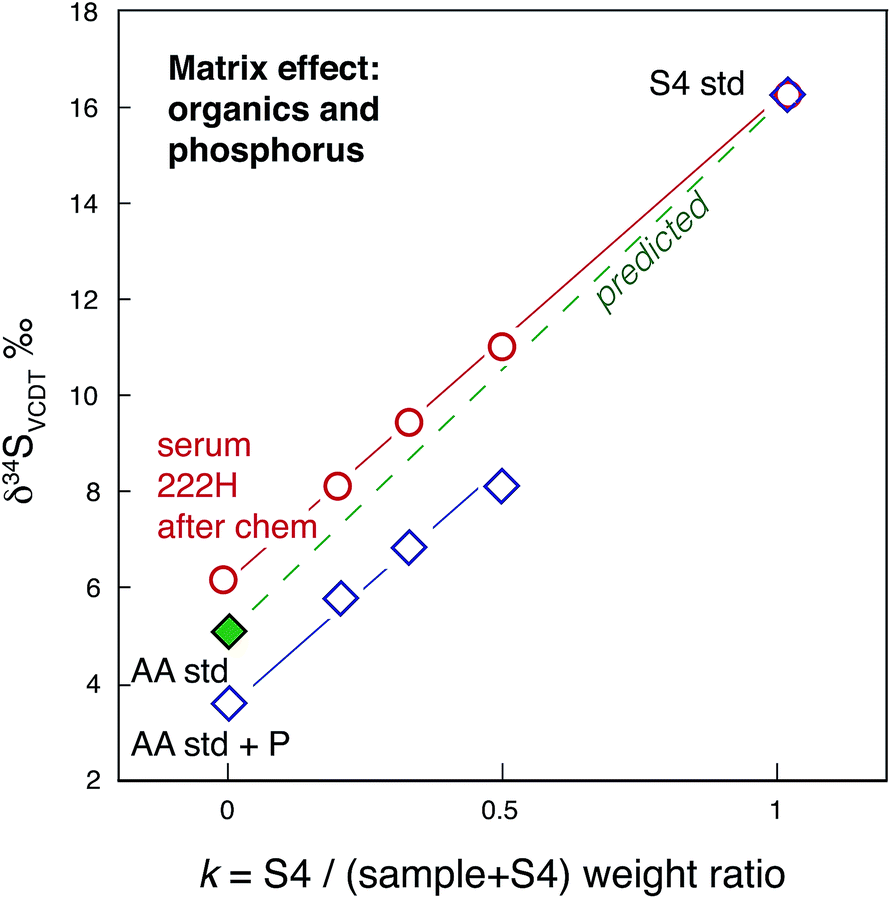We describe an analysis technique for S isotopes in sulfate form with the first separation step involving anion exchange and the second step of mass spectrometric analysis by MC-ICP-MS using standard-sample-standard brackets. Ammonium was used in a stoichiometric 1: 1 ratio with sulfate to improve transmission and stability and to avoid clogging of the cones and membranes by condensable species. The working resolution of ∼9000 allowed to solve the main interferences, especially 32SH in 33S. The matrix effect caused by phosphorus present in biological samples is negligible for S / P ≥10 ratios: our chemical protocol makes it possible to routinely achieve S / P ≥ 150. Repeated measurements of standard solutions of S give values of isotopic abundances within the errors of the accepted values and demonstrate a reproducibility of ± 0.10 ‰ for δ34S and ± 0.15 ‰ for δ33S (2s).

The technique is suitable for amounts as small as 10 nanomoles. We investigated δ34S from 110 samples from cancer patients and 10 samples from rheumatoid arthritis patients. We avoid the use of blood collection tubes with heparin containing sulfate. Sulfur in serum is transported by albumin and fibrinogen. Most serum and plasma δ34S values fall within a narrow range of ∼1 ‰ around a mean δ34SVCDT of ∼6.0 ‰. The δ34S values of whole blood, serum and plasma are very similar. Despite the short turnover time for albumin and fibrinogen, S is surprisingly well regulated. Subtle 0.2-0.3 ‰ variations around the mean value can be assigned to sex and age, and sulfur in male and adult samples tends to be heavier than their female and juvenile counterparts.
This narrow range of variations in the spectrum of large numbers of people not selected for controlled dietary habits seems paradoxical. In general, breast and prostate cancer and rheumatoid arthritis have very little effect on mean serum δ34S, but increase the spread of values. We confirmed that the serum of patients affected by liver cancer and other pathologies is devoid of sulfur derived from albumin. While serum sulfur from patients with non-malignant liver disease tends to be isotopically light, serum δ34S from patients with medicated hepatocellular carcinoma tends to be at the high end of control values.